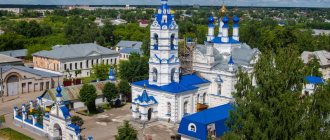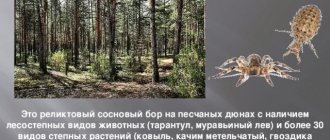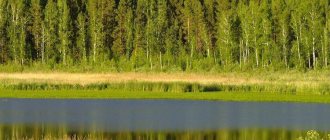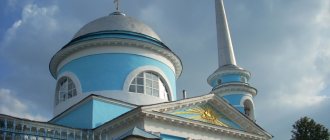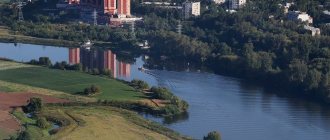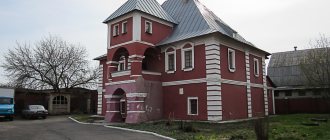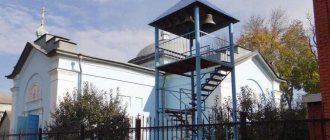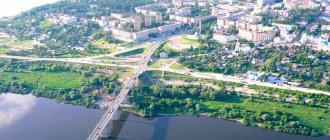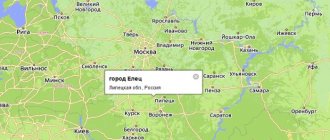| Sights Religious buildings Museums Stories, routes and tips from tourists with photos Where to stay in Kursk Excursions from Kursk for 1 day |
Kursk is the administrative center of the Kursk region and Kursk district. In the Middle Ages it was the heart of the Kursk Principality. Today it is one of the important transport hubs of the country, a city with rich scientific, educational, cultural and religious potential.
It takes quite a long time to get from Moscow (558 km) and St. Petersburg (1219 km), but the city is still worth including in a tourist route to explore the southwestern regions of the country. The trip will be less time-consuming for residents of neighboring Bryansk, Oryol, Lipetsk, Voronezh, and Belgorod regions.
Bus Moscow - Kursk Train St. Petersburg - Kursk
Tourists in Kursk do not particularly need to stay longer than 1 day: this is enough to see the cultural and historical sights, take a leisurely stroll through the historical quarters, and visit several museums and galleries.
The compact location of the main historical, cultural and religious attractions of Kursk allows you to explore them in one day. You can devote your evening time to a concert, performance, or getting to know some museum collection.
Travelers with children can head to the local water park . Another good option to end the day is a visit to the Central Park shopping center , on the top floor of which there is a huge Play Ventura amusement park (a real haven for children of all ages), and on the roof there is an observation deck with excellent views of the city.
The main thing is to plan your route in advance in order to accurately meet the allotted hours. A detailed guide to Kursk for 1 day with descriptions of attractions and reviews from tourists is below.
Kursk Museum of Local Lore
Founded on the initiative of Governor N.N. Gordeev in 1903. This was prompted by the arrival of Emperor Nicholas II. The museum opened its doors to visitors two years later. Ten years later, the museum collection already consisted of ten thousand exhibits.
The modern museum has three departments :
- nature;
- pre-revolutionary period;
- Soviet period.
The museum is located in the former bishop's chambers, built in the 19th century.
In the courtyard there is a tent mill , which is about a hundred years old.
Kursk Museum of Local Lore
Museum-estate of A. Fet
It has existed since 2010 as a branch of the local history museum. The house in Vorobyovka conveys the atmosphere of the time when the famous poet lived here.
A table set in the dining room awaits guests. Mirrored screens separate it from the living room where Tchaikovsky once played. On the second floor there is a billiard room, from the windows of which there is a wonderful view of the river.
Museum-estate of A. Fet
Oryol Region
Distance from Kursk - 120 kilometers
In the village of Dolbenkino, on the border of the Kursk and Oryol regions, there is a real Old Russian park. The mill, wooden stove, cart, and hut were made with their own hands by local residents - the Bulychev family. They also organized a local history museum, where you can hear about the history of the village, find out what the royal family did here, hear many stories about the local church and much more.
. . .
Military History Museum "CP of the Central Front"
This museum is also a branch of the local history museum. It is located in Svoboda , Zolotukhinsky district. Among the museum exhibits are the personal belongings of Marshal K.K. Rokossovsky, chief of staff M.S. Malinin and other commanders.
Visitors can visit the reconstructed dugout of the front commander and get acquainted with samples of military equipment.
Military History Museum "CP of the Central Front"
Water Mill
Once there were more than a thousand mills in the Kursk region, now only one has survived, which is located in the village of Krasikovo . The first mention of it occurs in 1780. It belonged to the estate of V.A. Glazov, that’s why they called her Glazovskaya.
The last owner of the mill was F.I. Tetyanets . His house stood nearby at the beginning of the 20th century. His descendant came to these places and was very surprised that the mill survived.
Water Mill
Belgorod region
Distance from Kursk—120 kilometers
In the village of Alekseevka, Yakovlevsky district, Belgorod region, the house-museum of Mikhail Shchepkin is located. In 1788, when the future actor was born, this village was called Krasny and was part of the Kursk province. Here was the estate of Count Wolkenstein, for whom Misha’s father, Semyon Shchepkin, served as a serf. It was at the Wolkenstein Theater that Shchepkin began his acting career. The museum is open all days from 9-00 to 17-00, except Monday.
. . .
"Palace for the Beloved"
The name of the estate has its own history. At the end of the 19th century, the village of Safonovka , where the palace is located, passed into the hands of Count I.T. Viktorova . Until the age of seventy he remained a bachelor.
While traveling in Germany, he met a young German woman and fell in love. He proposed, she did not refuse, but asked to build a palace as a sign of love. Three years later, a castle in the Gothic style appeared on the hill in Safonovka.
Despite the fact that the count fulfilled the condition, the German woman refused to marry him
Viktorov sometimes held receptions at the castle. In 1917, the owner of the castle left Russia. Nowadays there is a school in the castle.
"Palace for the Beloved"
What to see in Kursk in 1 day on your own
Kursk is associated primarily with one of the key battles of the Second World War and the Great Patriotic War - the Battle of Kursk. The largest tank battle involved 6 thousand tanks and about 2 million people, as well as 4 thousand aircraft. The Kursk Bulge Memorial Complex, 7 km from the city center, is dedicated to the outstanding event Its opening took place on July 5, 1998 and was timed to coincide with the 55th anniversary of the Battle of Kursk. Objects of the complex - the Triumphal Arch, the stele “Kursk - City of Military Glory” , the alley of military equipment from the Great Patriotic War, the monument to Marshal G.K. Zhukov, the granite tombstone of the “Unknown Soldier of the Kursk Land”, the Church of St. George the Victorious , inside which there are about seven thousand plaques with the names of Soviet soldiers who died on the Kursk Bulge. The memorial complex stretches for almost 2 km along Pobeda Avenue.
Photo: © Igor Butyrskii
If you arrived in Kursk by train, do not rush to take the next bus to the center. Examine the railway station . The very first station was destroyed by German aircraft in the summer of 1943. Instead, in 1952, a new terminal of the Kursk station was built according to the design of the architect Igor Yavein. The building is decorated with figures of workers and soldiers, there are memorial plaques on the external walls, a sculpture of a warrior is installed in the waiting room, and its walls are decorated with a bas-relief “Battle of Kursk”.
Kursk's main non-wartime attractions are concentrated in and within walking distance of Red Square
Perhaps it’s worth starting with Lenin Street , the central street of Kursk.
The development of this part of the city looks generally organic and does not discord with modern buildings.
At the intersection with Marata Street there is a single architectural ensemble formed by the building of the Central Hotel and the City Council building (1957). Now the City Council building houses the Administration and all sorts of committees.
The Internal Affairs Directorate building on Lenina, 5 (1948) and the House of Books on Lenina, 11 (1956) are architectural monuments, as is the City Council building.
Behind the House of Books there is an unusual monument in the shape of an apple - the Kursk "Antonovka" . The metal apple, created by local sculptor Vyacheslav Klykov, weighs 150 kg. Kursk, as you know, is the land of apples, which is what the author wanted to say.
Photo: © Igor Butyrskii
If you walk further along Lenin, you will find yourself near the Kursk Drama Theater named after A.S. Pushkin . The building was built in 1983. On its roof there is a bronze sculpture of the goddess of victory Nike, at whose feet are two theatrical masks and in her hand is a palm branch. The theater's repertoire includes about 20 performances based on Russian and foreign works. The capacity of the hall is 1000 people. a monument to A.S. Pushkin on the square in front of the theater .
Even further along Lenin there is an unusual building of the Main Directorate of the Bank of Russia for the Kursk Region (house No. 83). It was built in 1913 according to the design of the architect F. O. Livchak. Initially, the Peasant Land and Noble Banks were located here. During the years of Soviet power, Karl Bauman sat in one of the offices. In the post-war years, an extension was erected, and a vestibule with columns and stucco molding appeared. In 2001, a large-scale restoration was carried out.
Directly on Red Square is the building of the Regional Administration - the former House of Soviets , built in the classicist style (1941). Opposite is the House of Communications (1960), now the Central Post Office. You can come in and send a postcard with views of the city. The Zero Kilometer of the Kursk Region was installed in front of the post office .
Quite expectedly, there is a monument to Lenin (1993) on the square.
The only residential building on Red Square is the six-story residential building No. 2/4 , built in 1961.
If you turn onto Dzerzhinsky Street, you can go to the Puppet Theater , which is located in the building of a former gymnasium. The theater’s repertoire includes about 40 productions - for children from 3 years old (“Ryaba the Hen”, “Tsokotukha Fly”, etc.) and from 6 years old (“Thumbelina”, “Puss in Boots”, etc.).
If you wish, you can visit the May 1st Park - ride the Ferris wheel or just relax on a bench.
In the area of Sonin and Lunacharsky streets there are several attractions - the Znamensky Cathedral , the Church of the Resurrection of Christ , the defensive structures of the Kursk Fortress of the 17th century, the remains of the monastery fence, the Bishop's House (Museum of Local Lore).
Against the backdrop of all this, the brick building of the Assembly of the Nobility , built in 1877 in the eclectic style, stands out. It was reconstructed several times, but the facades were preserved in their original form. Currently, the Sviridov Arts Center (a branch of the Kursk Regional State Philharmonic) and the Kursk Regional Planetarium .
Moving along Sosnina Street, you will come to Soviet Square, where the Kursk State Circus . The opening took place in 2011. In front of the circus building there is a monument to Soviet clowns Yuri Nikulin and Mikhail Shuidin.
Photo: © Igor Butyrskii
While exploring the city, you should definitely visit the Art Gallery named after A. A. Deineka . It opened in 1935, and since then its holdings can rival the best art galleries in the country. In total, about 10 thousand works are stored here, which took part in many international exhibitions. Here you can see works by Barocci, Breidel, Tiepolo, Levitan, Schwartz, Polenov, Trutovsky, Kuindzhi. In addition to painting, graphics, engravings, sculpture, embroidery, icons, and porcelain are presented. The central collection is dedicated to the works of Alexander Deineka, a native of Kursk.
Kuznetsk source
The holy well is located in the Mikhailovka settlement , Zheleznogorsk district, 100 km from Kursk. The healing properties of the key have been known since the 18th century. The source is classified as a regional natural monument.
The area of the source is equipped for visitors, there is a font .
Kuznetsk source
Bryansk region
Distance from Kursk - 190 kilometers
The fortress of the 17th-18th centuries is located in the Sevsky district of the Bryansk region. Inside the fortress there is the Spaso-Preobrazhensky Monastery, which was built at a time when the route from Moscow to Kyiv passed through these lands. Outside are walls and towers, and inside are the ruins of the monastery itself. The city of Sevsk also deserves attention. Nice, old.
. . .
Central Chernozem Reserve
Reserve named after V.V. Alekhina has six plots located in the region. Pre-glacial vegetation and chalk hills have been preserved here. The flora of the reserve is very diverse.
Accompanied by a guide, you can walk along one of the hiking ecological trails . Visitors are invited to visit the local Natural Museum .
On the territory of the reserve there is a historical monument called “Stone Woman”
Its creation is attributed to the Cumans, and its age has exceeded a thousand years .
Central Chernozem Reserve
Where to stay in Kursk
Hotels and apartments in Kursk are spread throughout the city. In order not to waste time on the road, alternately changing high-rise blocks for a long private sector, it is wise to settle in the central part. Choose the area of Lenin, Radishchev or Dzerzhinsky streets. It is along them that the most memorable places of the city and symbols of Kursk are located.
Two dozen hotels in Kursk have mostly 3 or 4 stars. A larger selection is offered among private apartments and apartments. But there are very few hostels here and they are located closer to the outskirts. One of the countryside options could be an interesting option for a summer trip. The names of the hotels “Nightingale Grove”, “Grove of Brides” and “By the Lake” speak for themselves about their excellent location in a forested area.
- Kursk Hotels
- Hostels for Budget Travelers
- Flats and apartments
When booking accommodation on Booking.com, do not forget about cashback: Cashback promotion for Tourist. RU
Indigenous deserts
Kursk Nativity of the Blessed Virgin Mary of the Hermitage was founded in 1597. at this place in 1295 and a chapel was first built. Several centuries later, by decree of Tsar Fyodor Ioannovich, a monastery . At first the buildings were made of wood. They were subject to destruction, and in 1852 a stone church was founded.
After the revolution, Korennaya Pustyn was renamed Svoboda. The monastery was looted and closed. After the war, the monastery buildings housed a technical school. Since 1989, the process of transferring the Root Hermitage to the diocese began.
Indigenous deserts
The list of attractions of the Kursk region is not limited to this. There are still many interesting and beautiful places here.
You can learn more by watching the video:
Stories, routes and tips from tourists with photos
A list of attractions that are worth seeing in Kursk in 1 day can be found in traveler reviews. Tourists share their impressions of the city and give advice on how to have an enjoyable time in Kursk. You can use someone’s ready-made route, or you can create your own based on the recommendations of other tourists. In tourist reports about Kursk you will find photographs of the city at different times of the year, as well as tips on where to eat and where to spend the night.
- The story “Meet Kursk!” (Vladimir)
- Photo album “Kursk” (Igor Butyrskii)
- The story “The image of the Virgin Mary found in the roots of a tree. Kursk Root Hermitage" (NatalyA)
All tourist reviews about Kursk on Turister.ru
Photo: © Igor Butyrskii
